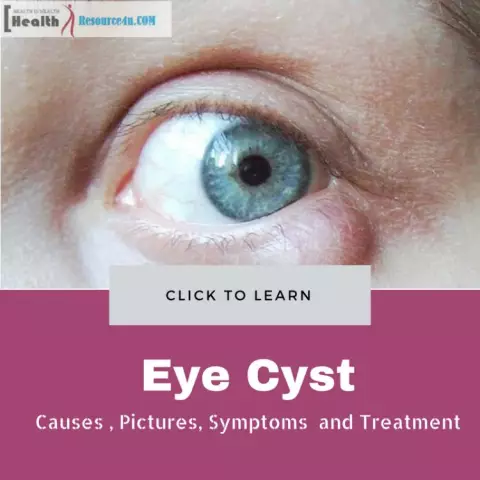- Author Rachel Wainwright [email protected].
- Public 2023-12-15 07:39.
- Last modified 2025-11-02 20:14.
Fibroadenoma

Fibroadenoma is an organ-specific benign breast tumor consisting of fibrous and glandular tissue. Fibroadenomas are the most common breast tumors in adolescent women, sometimes occurring in postmenopausal women.
Fibroadenoma of the breast is a benign tumor consisting of two elements: the epithelium and the stroma. Depending on the proportions and ratio between these two components, there are two histological types - intracanalicular and pericanalicular fibroadenoma. The most common type of tumor is mixed.
Signs and symptoms of fibroadenoma
Typical signs and symptoms of fibroadenoma are the presence of a painless, hard, solitary, mobile, slowly growing breast mass in women of childbearing age. The tumor is round or ovoid, elastic, nodular and has a smooth surface.
About ninety percent of the fibroadenomas encountered are less than three cm in diameter, and in the vast majority the remaining ten percent - four cm or more, appear mainly in women under twenty years of age.
In men, fibroepithelial tumors are very rare and are mainly associated with antiandrogen treatment.
Diagnosing fibroadenoma
Fibroadenomas are usually diagnosed by clinical and ultrasound examination, as well as by breast palpation and mammography. When diagnosing fibroadenoma, it is often necessary to do a tissue biopsy in order to rule out suspicions of breast cancer.
Fibroadenoma treatment
Treatment of fibroadenoma is possible with the help of surgery, in which normal and affected breast tissue is removed with a small margin.
A biopsy is often a reliable diagnostic test, on the basis of which some doctors may decide not to operate on the tumor, but instead opt for a clinical examination method to monitor the lesion over time and determine the rate of fibroadenoma growth.

Tumor growth rates of less than sixteen percent per month in women under fifty and less than thirteen percent per month in women over fifty are safe for repeated surgical treatment and clinical observation.
Some fibroadenomas respond to treatment with Ormeloxifen.
Not so long ago, it became possible to treat breast fibroadenoma with echo therapy. The essence of the procedure is the application of high-intensity focused ultrasound, which is used both for the treatment of breast cancer and benign tumors. This method is non-invasive and consists in heating the tissue, which leads to the destruction of fibroadenoma cells.
Cryodestruction can also be used to remove fibroadenoma - a procedure in which abnormal tissue cells are destroyed with cold nitrogen. This method is a safe, effective and minimally invasive alternative to open surgery.
The procedure can be performed on an outpatient basis under local anesthesia and has the advantage that significantly fewer scars remain after the procedure than with open surgical procedures.
The world community of surgeons recommends cryodestruction for removal of fibroadenoma if the following established criteria are met:
- The lesion must be sonographically visible;
- The diagnosis of fibroadenoma must be confirmed histologically;
- The lesion must be at least 4 cm in diameter.
YouTube video related to the article:
The information is generalized and provided for informational purposes only. At the first sign of illness, see your doctor. Self-medication is hazardous to health!






